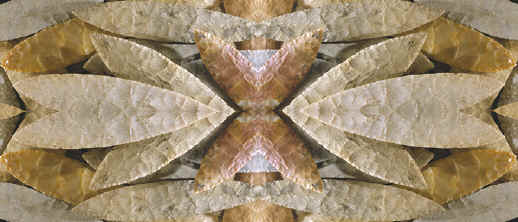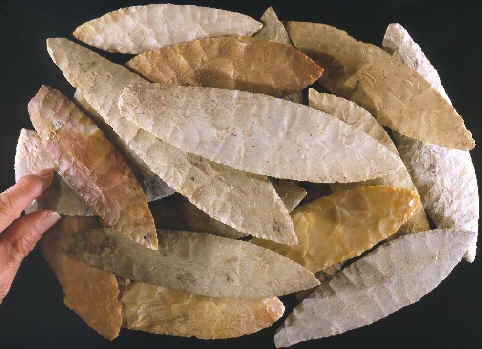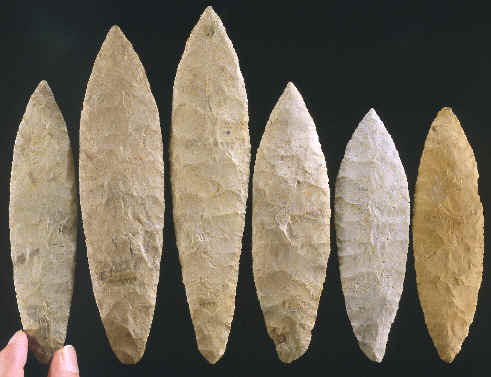|
||
|
||
|
"The uses of the knife are innumerable; it
served in war and was indispensable in every branch of the arts of life,
in acquiring raw materials, in preparing them for use, and in shaping
whatever was made."---1912,
Frederick Webb Hodge, "Handbook of American Indians, North
of Mexico," p. 717.
Sometime around 900 A.D. Cahokia flint-smiths began making large bifacially flaked knives. Their center of distribution was the Cahokia Mounds site in Madison and St. Clair Counties in southern Illinois. In 1963, Gregory Perino named them Ramey knives after the Ramey site at Cahokia Mounds. |
||
|
Ramey knives are described by Perino as large lanceolate points. They are widest at the center and upper one-third of the length. Their edges taper convexly to an unfinished or rounded base. He also states that a frequently used specimen may have a pointed basal end. |
||
|
Ramey knives have been found where ever there are Cahokia related sites. They have been found as far away as Wisconsin. But the majority of them are reported from southern Illinois and across the Mississippi River into Missouri. Sporadic finds have also been reported in surrounding states. One of the knives (2nd from right in picture above) in this article is reported to have been found in Tennessee. |
||
| CONTINUE ON TO PAGE TWO | ||
|
"REFERENCES"
1912,
Hodge, Frederick Webb, "Handbook of American Indians, North
of Mexico," p. 717. |
||




